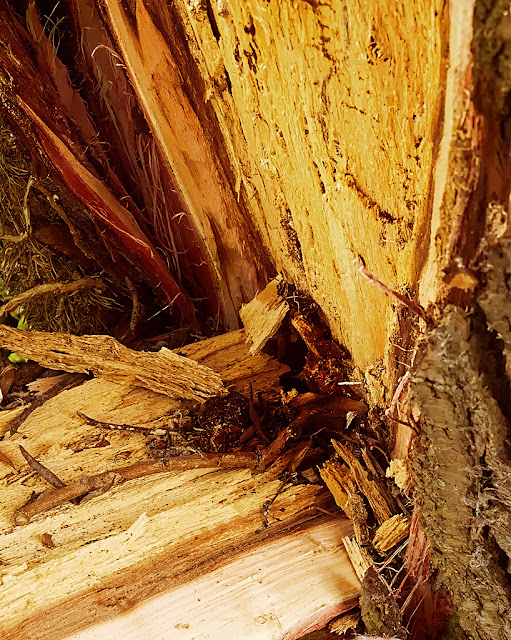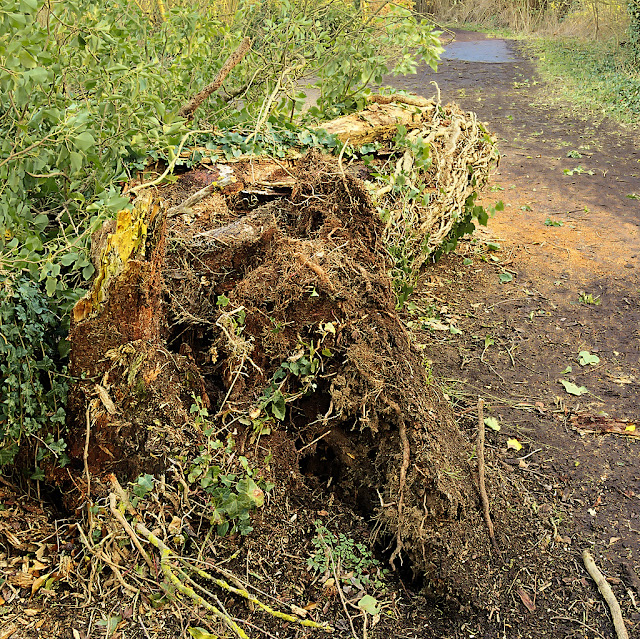 |
| The root ball of fallen trees always seem improbably small. |
The park was closed on the day of the storm, and by the time it reopened the following day, all the paths had been cleared of fallen trees. All the photographs in this post were taken on either February 24 or 26.
 |
| Willow tree snapped in two. |
The root ball of a felled tree always seems impossibly small for the size of the tree above the ground. The diameter of the roots is far less than I would expect, and there is no long tap root burying deep into the ground. Yet the leverage exerted by the trunk and crown swaying in even a moderate wind must be quite immense, and, one could well imagine, far too much for such a small anchor. All those thousands of little roots must effectively stitch the tree into the ground.
 |
| Close of fracture gives some idea of the forces involved. |
But, even more impressive, are the forces that must be involved to break the trunk of a tree in two, splitting what appears to be quite solid wood in two as cleanly as if cleaved by an axe.
 |
| There's a certain sadness about a fallen tree. |
The woodland trust are quite clear that ivy does not kill or harm its host. However, I wonder if the presence of a heavy growth of ivy on a tree in anyway increases its chances of being blown over in a high wind. The ivy must increase the wind resistance of the tree, which together with the weight of the ivy, must put an extra strain on the root system. On the other hand, the thick ivy tendrils surrounding the trunk, grounded in their own independent root system, could be acting as guy ropes and actually help to stabilise the system.
 |
| Ivied crown heaped up beside the path |
I found the sight of the remains of a once mighty tree lying on the ground quite sad. On one side of the path was a heap of what appeared to be ivy, but the sawn ends of branches showed it was the canopy of the fallen tree. On the other side of the path, was a line of neatly sawn sections of its trunk, which seemed to me to be like chapters of a biography - a life parcelled out into manageable sections and lifeless.
 |
| The trunk of the tree sawn into neat sections. |
Next: March 2017
No comments:
Post a Comment